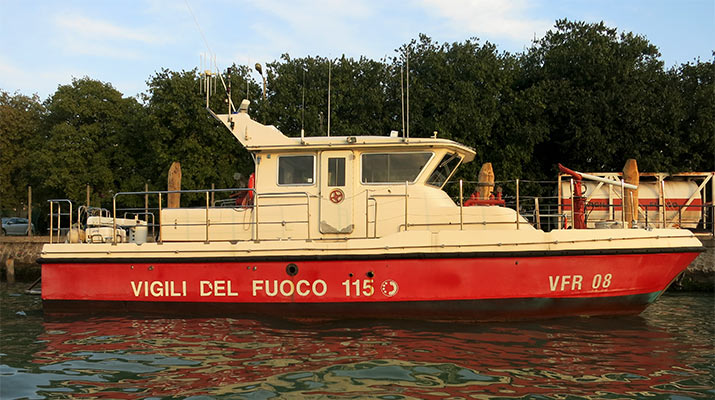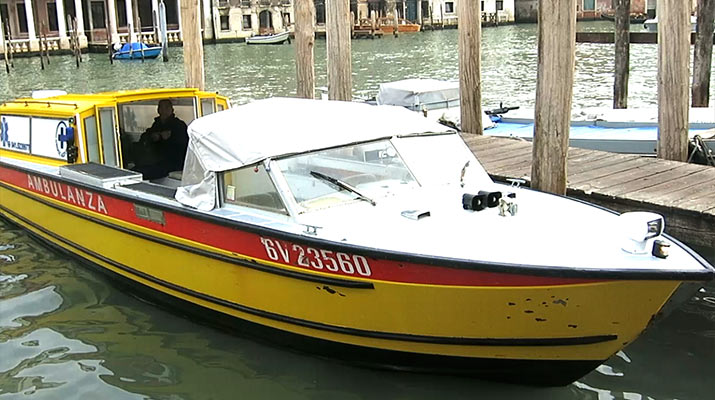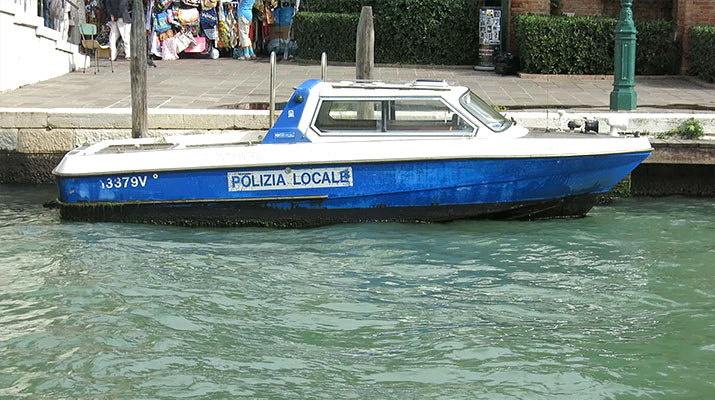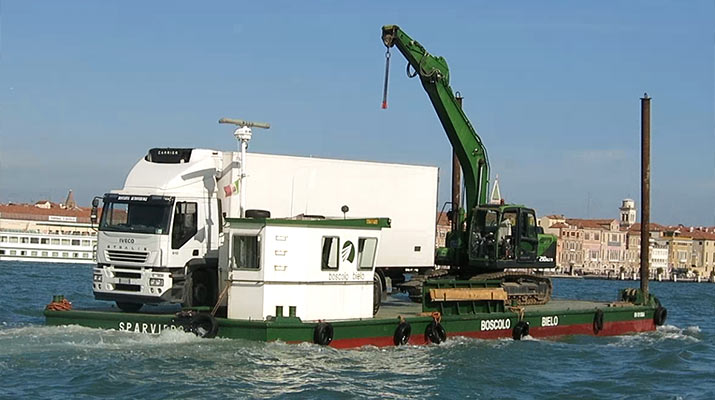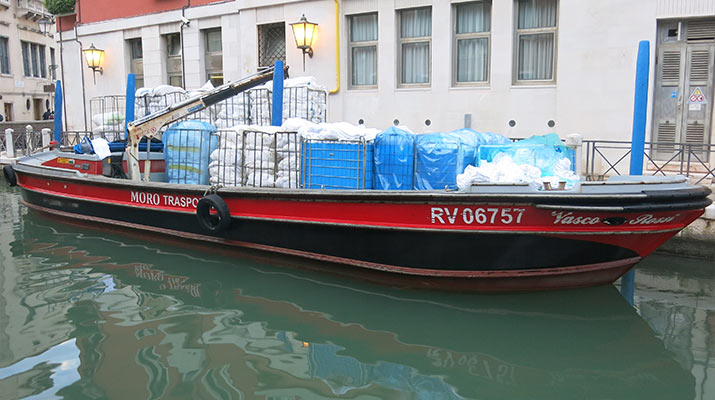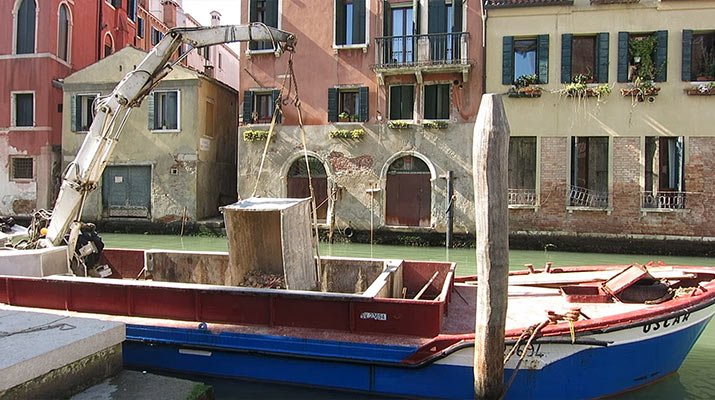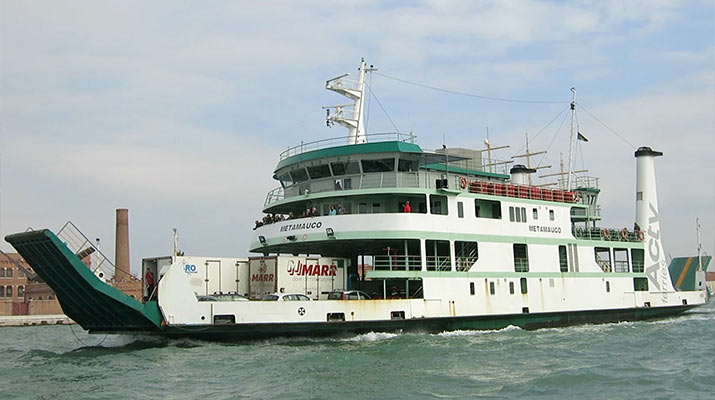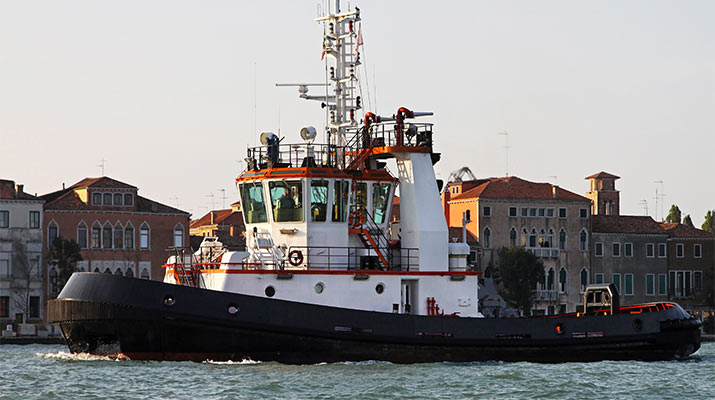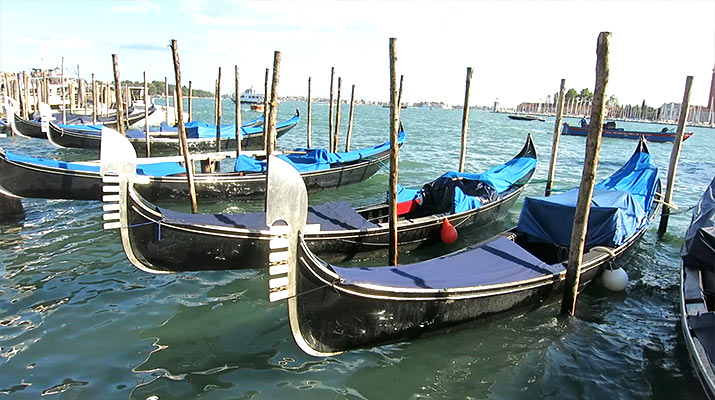One morning exploring Venice, we were fascinated by something we’d never seen, though it’s every day life for the Venetians. We watched a boat docked at the service entrance to a big hotel. Using a small crane, a guy hoisted up small carts stuffed with white laundry bags, and gently deposited them in the boat. When the boat was full, the guy lowered the crane and sailed off, taking away the hotel laundry.
It’s life without a car in downtown Venice! Think about it. How do you get around, collect garbage, pick up hotel laundry, transport goods, deliver mail and packages, go shopping, stock a supermarket, renovate an apartment, send an ambulance, put out a fire?
Gondolas are a symbol of Venice, but visiting Venice with kids, see how many different boats you can spot, from tiny one man motorboats to large ferryboats and sailing ships. Also watch the people piloting the boats, maneuvering them with such ease. One guy on a heavily loaded boat stood with the tiller between his feet, hands free driving.
All goods in the city center are transported by boat. We saw boats hauling recycled cardboard, cases of wine, empty metal kegs, lumber, rope, stacks of bottled water, packages to be delivered. Refrigeration boats carry food products, such as cheese and yogurt. Next to Campo San Barnaba is a barge where people come to buy fresh fruits and vegetables.
At the Fish Market (Pescaria) next to Rialto Bridge, the garbage collection boat was something to watch. A large crane picked up each wheeled cart stuffed with black garbage bags, levitated the cart over to the garbage collection boat, the cart bottom opened up, garbage bags dropped in the boat hold, then the operator maneuvered the empty cart back to the wharf.
Boats are essential for bringing raw materials used in construction and removing renovation debris. On Murano, two guys delivered sand for a construction project. One operator used a crane with shovel to lift up a load of sand, then released the sand into a wheelbarrow on the sidewalk next to the canal. The second guy wheeled the sand off, then returned for a fresh load.
In the smaller canals, just stand on a bridge and look down at water taxis and personal motorboats zipping around – it’s like dance choreography, the boats pass close to each other at speed, but don’t collide.
Water buses, vaporetto, are public transportation around the city center (six districts), and out to the islands such as Murano, Burano and Torcello. A speedier double decker boat (motornave) go out to the Lido, the orange airport boat Alilaguna goes to the airport.
Vaporetto Line 1 goes down the Grand Canal, but for big boat spotting, take Line 2 between Piazzale Roma through Guidecca Canal. On that route, we saw several bright red fire boats (Vigili del Fuoco), large scale construction boats, tugboats for the big ships, car ferries, and our favorite, a barge transporting a large white van and big green crane (the Lido does have trucks and cars).
Boats you won’t see sailing on the Venetian lagoon today are the doge’s Golden Boat (Bucintoro) or war galleys used by the Venetians for centuries. In the Middle Ages, the Venetians had a maritime empire that extended from Venice to the Middle East and Black Sea. The Venetians were incredible boat builders, and you can see a treasure trove of ships at the Naval Museum (under renovation, visit the Ships Pavilion next to the Arsenale for now).
Doge’s Golden Boat (Bucintoro)
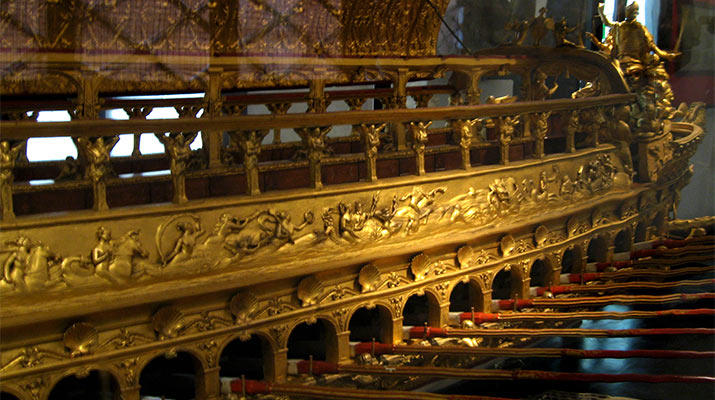
Tips for boat rides with kids in Venice. Kids under 6 are free, but single ride tickets are pricey. Your best bet is a 1,2, or 3 day tourist travel card for unlimited rides on waterbuses around Venice, the Lido, and out to Murano, Burano, Torcello.
Buy the travel cards at machines next to the vaporetto landings, or faster and less confusing, we bought them at the news stand next to Piazzale Roma boat landing. For more info: ACTV
It’s not necessary to have boat tickets for every day of your visit in Venice. The city center is very compact, and you can walk everywhere.

